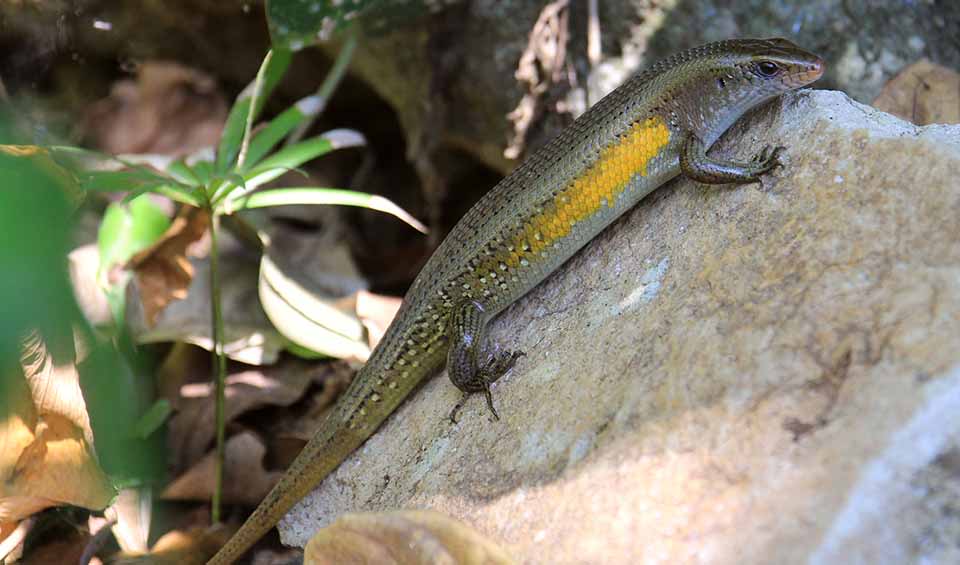One of the most widespread and recognizable lizards in South and Southeast Asia. Found in countries like India, Sri Lanka, Thailand, Indonesia, and the Philippines, this sleek and shiny reptile is a familiar sight in both rural and urban areas. Its adaptability, speed, and preference for basking in the sun have made it a successful survivor in a wide range of environments—from forests and grasslands to gardens, farms, and even city walls.
The common mabuya has a slender, streamlined body covered in smooth, glossy scales that give it a bronze or coppery sheen—especially when it catches the sunlight, hence the nickname “sun skink.” Along its body are dark stripes or bands, which can vary depending on the population and region. These markings, combined with its shining surface, help it blend in with dry leaves, soil, and undergrowth.
One of its most remarkable survival tools is tail autotomy—the ability to shed its tail if grabbed by a predator. The detached tail wriggles for several seconds, distracting the predator and giving the skink time to escape. The tail gradually regrows over time, although it’s never quite the same as the original.
The common mabuya is also known for being highly adaptable to human environments. It’s not unusual to find them basking on windowsills, garden paths, or even inside homes in search of warmth or insects. This tolerance for disturbed habitats makes it one of the few reptiles that actually benefits from human presence—though it can sometimes be mistaken for a pest.
Distribution
 Australia
Australia Brunei
Brunei Cambodia
Cambodia China
China India
India Indonesia
Indonesia Indonesia
Indonesia Laos
Laos Malaysia
Malaysia Myanmar
Myanmar Palau
Palau Papua New Guinea
Papua New Guinea Philippines
Philippines Singapore
Singapore Taiwan
Taiwan  Thailand
Thailand United States
United States Vietnam
VietnamAnything we've missed?
Help us improve this page by suggesting edits. Glory never dies!
Suggest an editGet to know me
Terrestrial / Aquatic
Altricial / Precocial
Polygamous / Monogamous
Dimorphic (size) / Monomorphic
Active: Diurnal / Nocturnal
Social behavior: Solitary / Pack / Herd
Diet: Carnivore / Herbivore / Omnivore / Piscivorous / Insectivore
Migratory: Yes / No
Domesticated: Yes / No
Dangerous: Yes / No




